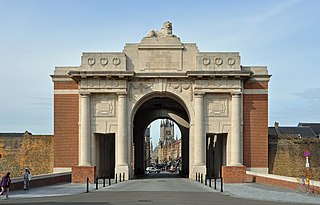
The Menin Gate, officially the Menin Gate Memorial to the Missing, is a war memorial in Ypres, Belgium, dedicated to the British and Commonwealth soldiers who were killed in the Ypres Salient of World War I and whose graves are unknown. The memorial is located at the eastern exit of the town and marks the starting point for one of the main roads that led Allied soldiers to the front line.
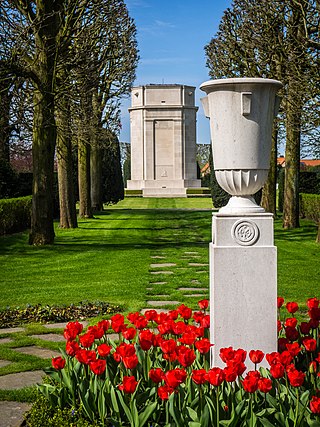
Flanders Field American Cemetery and Memorial is a World War I cemetery in the city of Waregem, Belgium. Originally a temporary battlefield burial ground, Flanders Field American Cemetery later became the only permanent American World War I cemetery in Belgium. The Flanders Field American Cemetery commemorates 411 service members of the United States Armed Forces of which 368 are interred. The Walls of the Missing inside the chapel venerates 43 missing service members.

Tyne Cot Commonwealth War Graves Cemetery and Memorial to the Missing is a Commonwealth War Graves Commission (CWGC) burial ground for the dead of World War I in the Ypres Salient on the Western Front. It is the largest cemetery for Commonwealth forces in the world, for any war. The cemetery and its surrounding memorial are located outside Passendale, near Zonnebeke in Belgium.

The St. Julien Memorial, also known as The Brooding Soldier, is a Canadian war memorial and small commemorative park located in the village of Saint-Julien, Langemark, Belgium. The memorial commemorates the Canadian First Division's participation in the Second Battle of Ypres of World War I which included fighting in the face of the first poison gas attacks along the Western Front. The memorial was designed by World War I veteran and architect, Lieutenant Frederick Chapman Clemesha, and was selected following a design competition organized by the Canadian Battlefields Memorials Commission in 1920.

The 2nd Division of the Australian Army, also known as the 2nd (Australian) Division, commands all the Reserve brigades in Australia. These are the 4th in Victoria and Tasmania, the 5th in New South Wales, the 11th in Queensland, the 13th in Western Australia, and the 8th spread across the country. The division is also responsible for the security of Australia's northern borders through its Regional Force Surveillance Units.

The Passchendaele Canadian Memorial is a Canadian war memorial that commemorates the actions of the Canadian Corps in the Second Battle of Passchendaele of World War I. The memorial is located on the former site of Crest Farm, an objective captured by the 4th Canadian Division during the assault of 30 October 1917.

Villers-Bretonneux is a commune in the Somme department in Hauts-de-France in northern France.

Ramparts Cemetery (Lille Gate) is a Commonwealth War Graves Commission (CWGC) burial ground for the dead of the First World War located in the Ypres Salient on the Western Front.
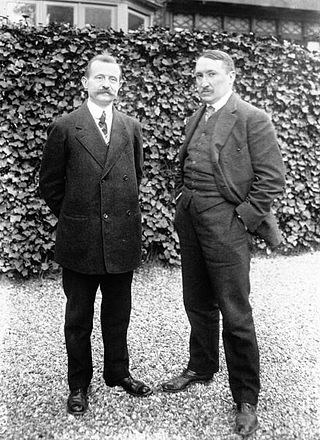
Paul Moreau-Vauthier was a French sculptor.

The First Battle of Villers-Bretonneux, took place during Operation Michael, part of the German spring offensive on the Western Front. The offensive began against the British Fifth Army and the Third Army on the Somme and pushed back the British and French reinforcements on the north side of the Somme. The capture of Villers-Bretonneux, close to Amiens, a strategically important road- and rail-junction, would have brought the Germans within artillery-range. In late March, Australian troops were brought south from Belgium as reinforcements to help shore up the line and in early April the Germans launched an attack to capture Villers-Bretonneux. After a determined defence by British and Australian troops, the attackers were close to success until a counter-attack by the 9th Australian Infantry Brigade and by British troops, late in the afternoon of 4 April, restored the line and halted the German advance on Amiens.
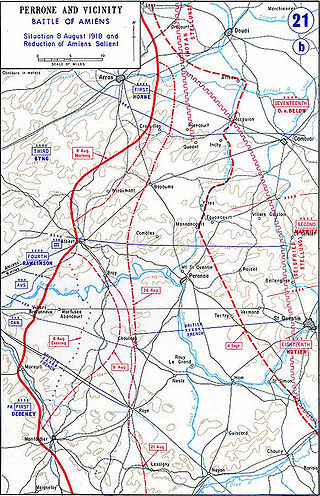
The Second Battle of Villers-Bretonneux took place from 24 to 27 April 1918, during the German spring offensive to the east of Amiens. It is notable for being the first occasion on which tanks fought against each other; it was the biggest and most successful tank action of the German army in the First World War.

Spanbroekmolen British Cemetery is a Commonwealth War Graves Commission (CWGC) burial ground for the dead of the First World War located in the Ypres Salient on the Western Front in Belgium. It is located at Spanbroekmolen, on one of the highest points of the Messines Ridge.

The Australian National Memorial, Villers-Bretonneux is the main memorial to Australian military personnel killed on the Western Front during World War I. It is located on the Route Villiers-Bretonneux (D 23), between the towns of Fouilloy and Villers-Bretonneux, in the Somme département, France. The memorial lists 10,773 names of soldiers of the Australian Imperial Force with no known grave who were killed between 1916, when Australian forces arrived in France and Belgium, and the end of the war. The location was chosen to commemorate the role played by Australian soldiers in the Second Battle of Villers-Bretonneux.
The Monuments aux Morts of the Eastern Somme are French war memorials commemorating those who died in World War I on the eastern side of the Somme region.

The 52nd Battalion was an infantry battalion of the Australian Army. It was originally raised in 1916 as part of the Australian Imperial Force for service during World War I. After training in Egypt, the battalion took part in the fighting in the trenches of the Western Front in France and Belgium, including major battles at Mouquet Farm, Messines, Polygon Wood, Dernancourt and Villers-Bretonneux. In May 1918, the battalion was disbanded to provide reinforcements for other depleted Australian units. After the war, the battalion was re-raised as a part-time unit in Victoria in 1921 and served until 1930 when it was amalgamated with the 37th Battalion to become the 37th/52nd Battalion. In 1936, the battalion was re-formed and during the early part of World War II it undertook garrison duties in Australia before being merged once again with the 37th Battalion in 1942.
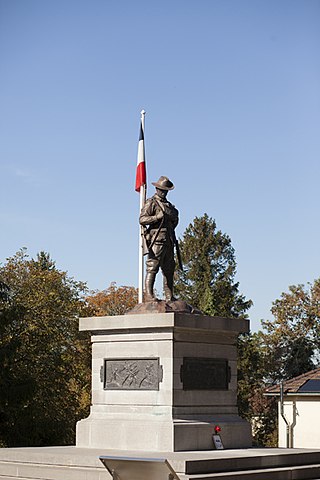
Mont Saint-Quentin Australian war memorial is an Australian First World War memorial located at Mont Saint-Quentin in Péronne, France. This monument was erected in honor of the fallen soldiers of the Australian Second Division during the Battle of Mont Saint-Quentin. It is one of five commemorative monuments initiated by the soldiers of the division. The memorial is located on the Bapaume-Péronne road (D1017).

The 177th Tunnelling Company was one of the tunnelling companies of the Royal Engineers created by the British Army during World War I. The tunnelling units were occupied in offensive and defensive mining involving the placing and maintaining of mines under enemy lines, as well as other underground work such as the construction of deep dugouts for troop accommodation, the digging of subways, saps, cable trenches and underground chambers for signals and medical services.

Hill 60 is a World War I battlefield memorial site and park in the Zwarteleen area of Zillebeke south of Ypres, Belgium. It is located about 4.6 kilometres (2.9 mi) from the centre of Ypres and directly on the railway line to Comines. Before the First World War the hill was known locally as Côte des Amants. The site comprises two areas of raised land separated by the railway line; the northern area was known by soldiers as Hill 60 while the southern part was known as The Caterpillar.
The Sir John Monash Centre is a museum and interpretive centre that commemorates Australian servicemen and women who served on the Western Front during the First World War. The centre, located near the village of Villers-Bretonneux (Somme) in northern France, is set behind the Villers–Bretonneux Australian National Memorial and within the military cemetery. The centre opened in April 2018.



















